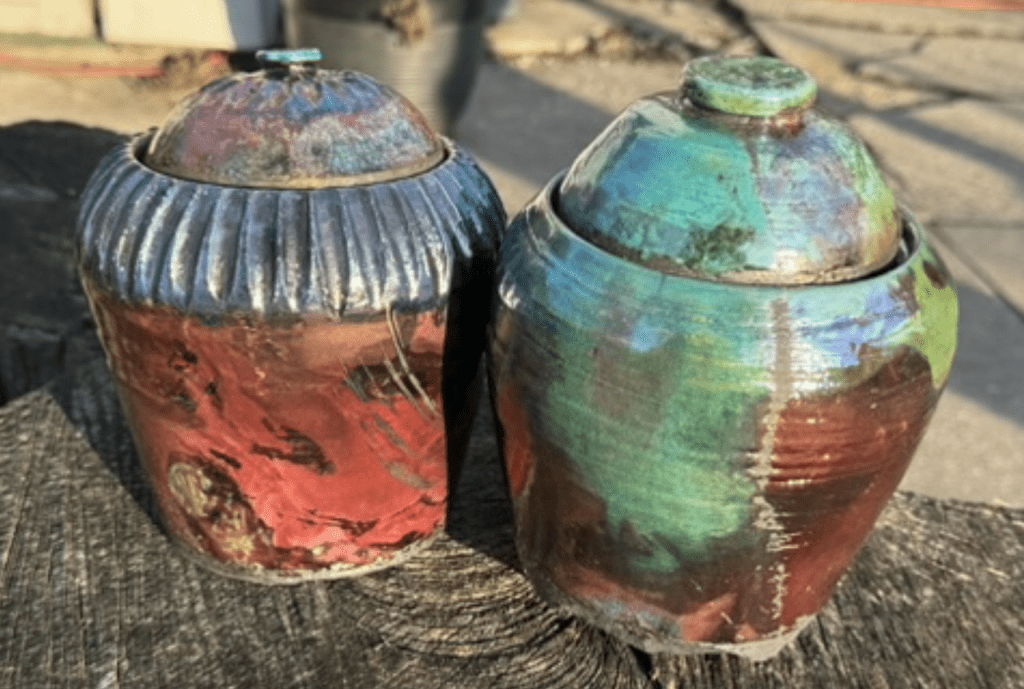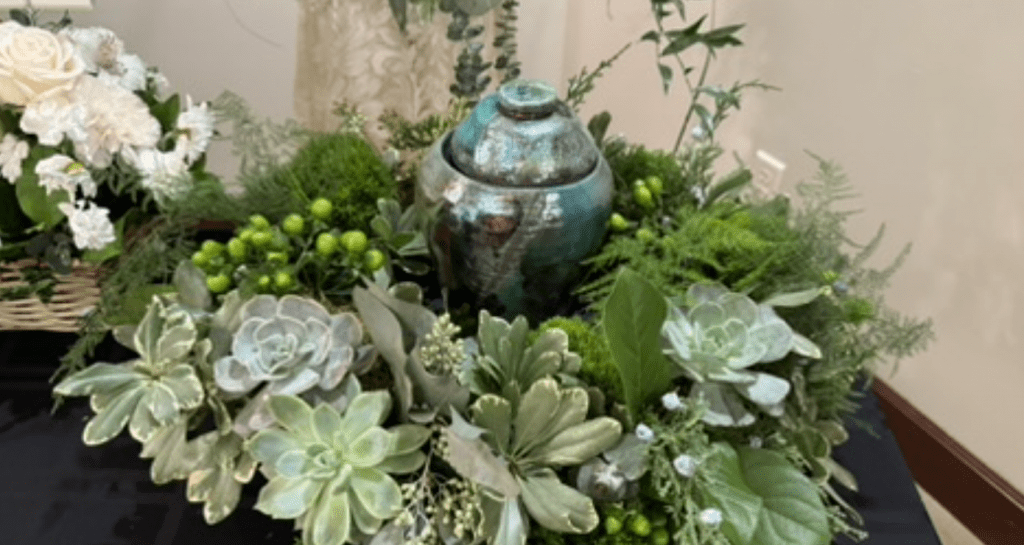
It sure has been a minute… We had a death in the family, one of the kittens dismantled the spinning wheel and ate two feet of drive belt and then spent 2 days at the ER (turns out she also has a heart murmur), the house behind us burned down, the weather is all wrong, and I am trapped in 2 rooms with COVID for going on 14 days now. Oh, and its an election year.
Anyway – the rest of this post and the next are going to be about pottery work I did for the funeral.
This post is just about the work for the urn, next time I’ll have a big fancy content warning about cremation details, but I’ll lightly content warning this one just the same because its still death adjacent.
I had to re-learn some lessons the hard way but I see questions about this stuff online all the time in pottery groups so let’s share!
Ok.
So.
The death was sorta unexpected; we knew their wishes were for cremation but I hadn’t offered to make an urn in advance because it just didn’t seem the right time. This meant that I had only a handful of days between the death and the funeral if we were going to have the urn on hand for the services. My plan was raku, partly because it’s beautiful, but also because it would cut about 20 hours out of my tight firing schedule. I timed it all out – an evening to throw, circulate dry air overnight, trim, candle in the kiln for 10-12 hours, bisc fire, glaze while the raku kiln heats up, hot load it and reduction fire only adds another hour or so. A little under three days. Agressive? Extremely.
Lessons:
- If something is important make extras.
Nothing is certain in ceramics, the embracing of this is actually one of my favourite parts but I did not have time for mistakes on this. I made 3… my biggest fear was actually accidents during the raku fire. - Air bubbles don’t cause explosions, moisture does.
This one about air bubbles is one of the things I hear most often – its just not true. If something explodes you had moist clay in the kiln when the temperature heated above 212F (100C). That moisture turns into steam with nowhere to go and BOOM.
Can you guess where this is going?
Yeah, I was very tired when I trimmed the bottoms. They were still so wet that I was afraid to thin them down too far and that made it even worse.
Every. Single. One. Exploded.
Two of them though were sortof salvageable… maybe. That second one actually just lost its foot. Mostly.



I mentioned candling and this is where it’s relevant – candling is when you load your kiln with greenware that you aren’t certain is dry, prop the lid open a couple of inches, set the temp to hold at about 180-190F, and let it dry for as long as it takes. If your ware is pretty dry maybe just 4 hours, if its not it can be much longer. You keep candling until you can hold a mirror up to the gap and there’s no fog formed on the surface. (I forgot the mirror inside and figured the front surface of my phone would serve – it apparently did not.)
- Raku colors are unpredictable
I’ve got that cool bowl of raku sample tests, you know? It was a nice thought but raku has sooo many variables that are difficult to control its often a low chance guess at best. These were nothing like what I expected but I’m also not sad about either one.


Nothing a wreath around the bottom wont fix, am I rite? 😅👍
If you’ve stuck with me this far I’ve got an extra piece of cool info though! Check out the bottom of this post from Beulah Valley Pottery. It’s a simple alteration to a gallery lid that lets you add a twist lock for container security! It’s near the bottom but totally worth checking out.
Ok, until next time – I’ve got one other keepsake project I did for this that came out fantastically!
Ty out.